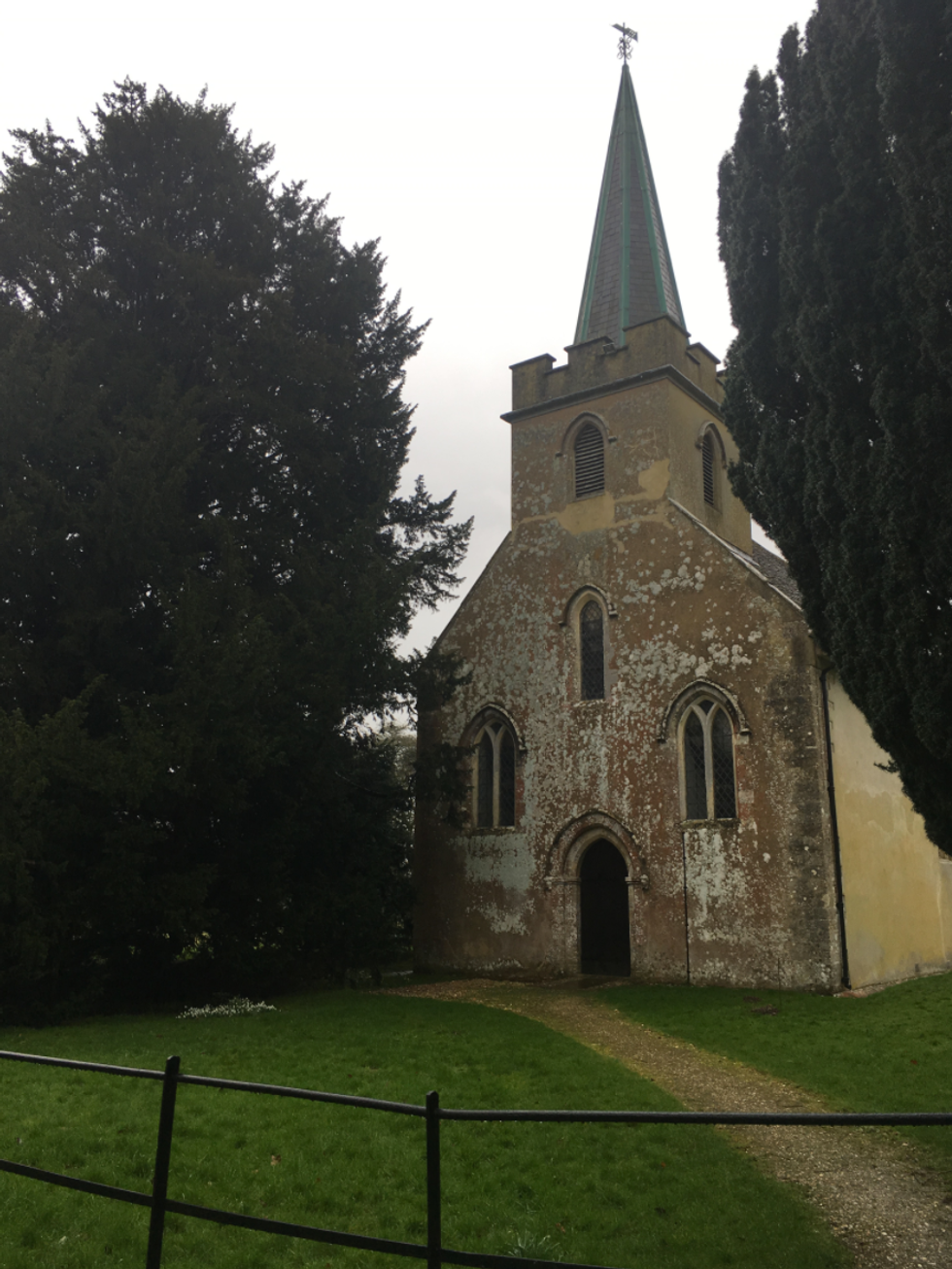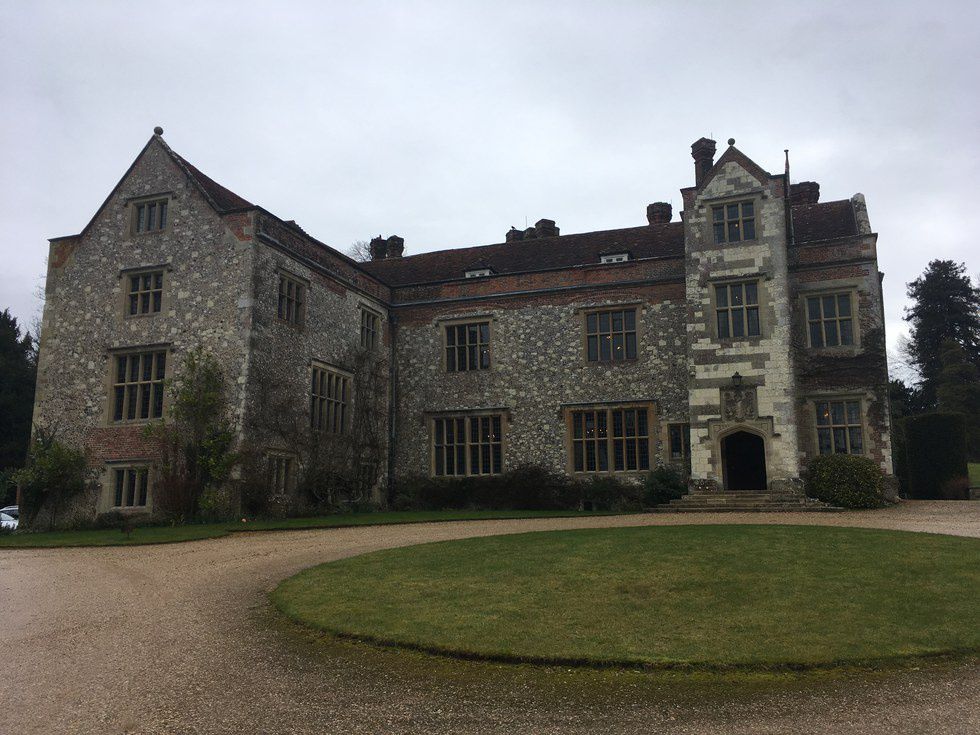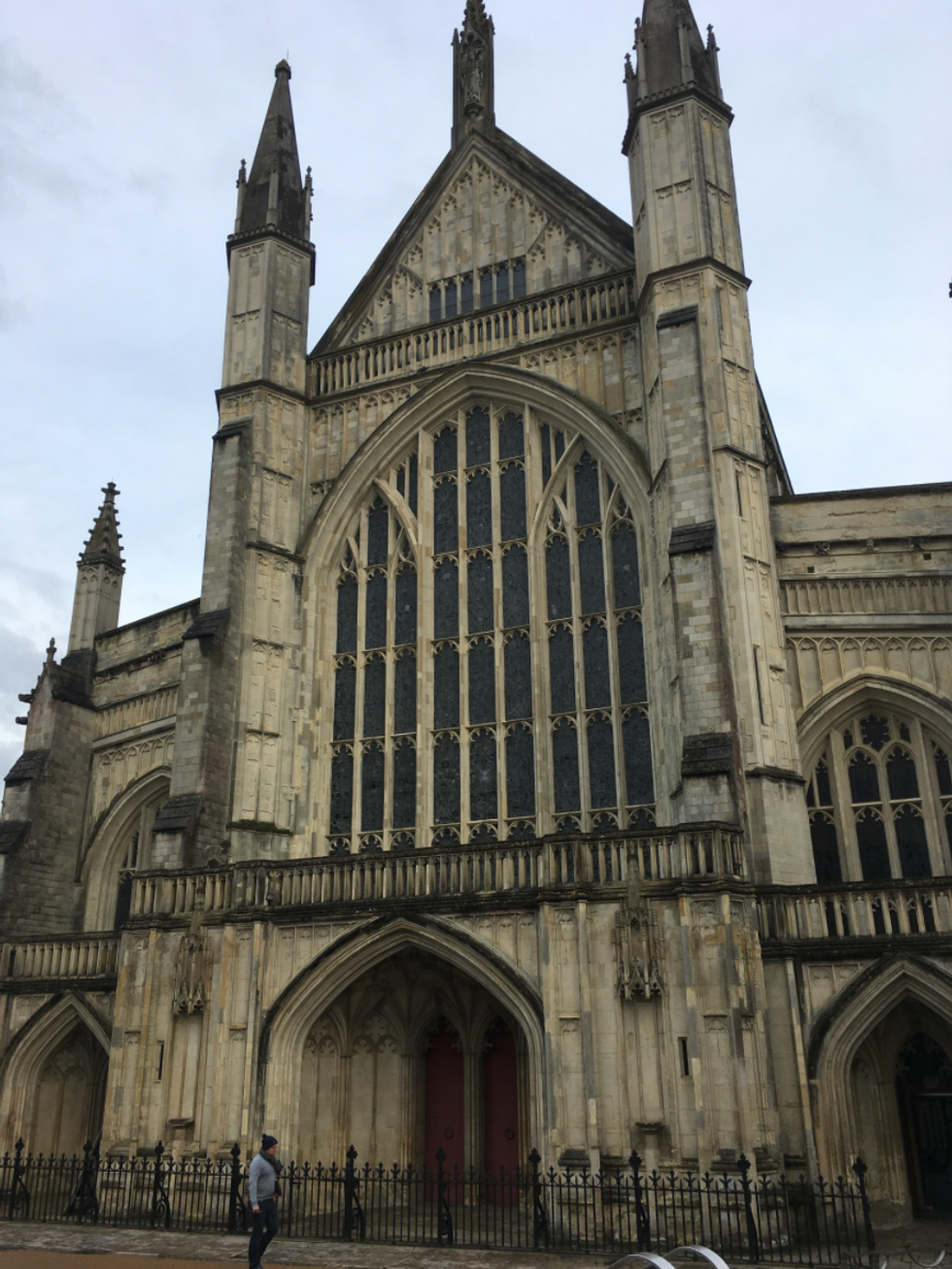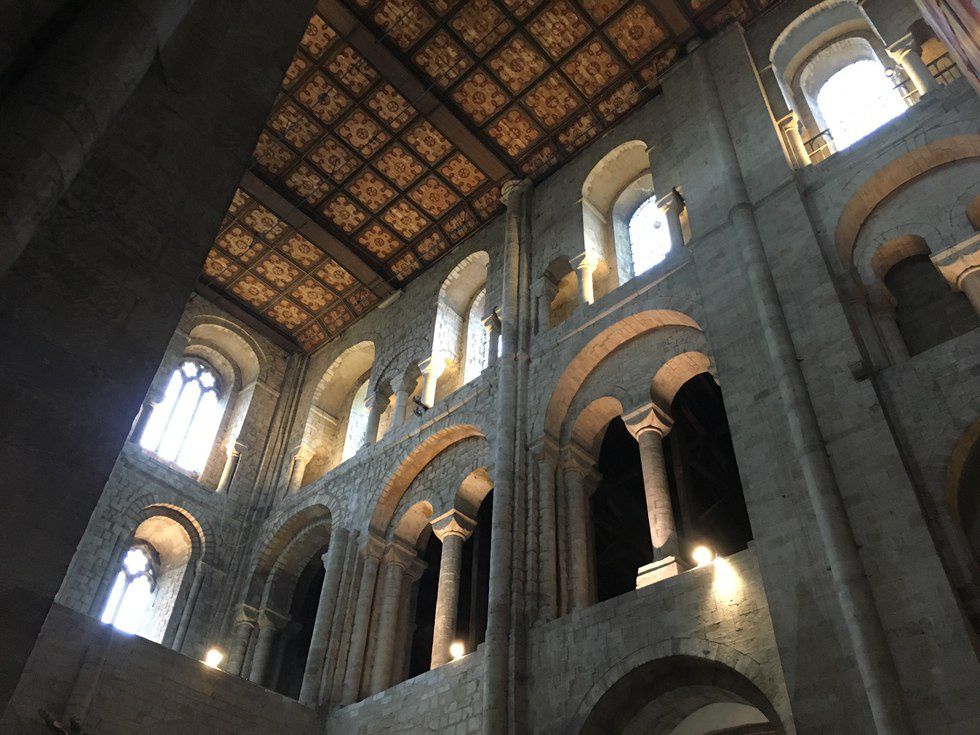While last week's adventure involved petting dogs at a British manor, this week's field trip involved walking in the footsteps of the 19th-century writer, Jane Austen. Bath acted as Jane Austen's residence for a short time in her adult life, but from her novel "Northanger Abbey" it's clear this city influenced her writing. My courses at ASE give us the opportunity to experience the subjects we're learning first hand. For my Jane Austen course--yes an entire class dedicated to her works and their importance to 19th century literature--my class took an entire day to walk through the life of this infamous female writer.
Steventon
This was our first stop of the day. This countryside town is the birthplace of Jane Austen. She lived her for the first twenty-five years of her life. The church pictured below is where her father worked and she came to this church on Sundays during her childhood. The simplicity of the structure and the interior makes every small village Jane Austen writes about in her own novels that much more authentic. She clearly draws on her own memories for landscapes and settings.
Chawton
Our second destination marks the location Jane Austen lived with her mother and sister in a cottage down the street from her brother's house. Edward Austen-Knight inherited the estate (pictured below) from a childless couple who were family friends of the Austens. Jane Austen would often visit her brother here and clearly gother inspiration for houses described in "Sense and Sensibility" and "Pride and Prejudice" from this landscape. This house now serves as a library and keeps a collection of early female writers who wrote around the time of Jane Austen as well. The cottage Jane Austen lived in down the street is significantly smaller, but still more spacious than I originally assumed. However, the house was set up as a museum, which took away the aspect that Jane Austen actually lived there.
Winchester
Once the capital of England, this larger modern town is where Jane Austen spent that last days of her life. The Winchester Cathedral is a medieval structure that towers over the cramped buildings nearby. Jane Austen is buried inside this beautiful place. Besides the engraved stone in the floor and small plaque on the wall beside it, there is nothing special symbolizing Jane Austen's burial site. Interestingly enough, her tombstone doesn't express anything about her being a writer. The only mention of her talent is hidden in the words: "the benevolence of heart, the sweetness of her temper and the extraordinary endowments of her mind obtained the regard of all who knew her."
The Cathedral's architecture alone made it worth walking through.
The simplicity of Jane Austen's childhood church, cottage, and gravestone exemplify the ways in which her novels present the ideas of countryside life and her heroines conflicts. As a female writer in the 19th century, she certainly did not get the all the recognition she deserved, but by creating stories that challenged the notions of women during her time, she made it possible for women, like me, to follow in her footsteps today.
Need a Jane Austen quote to live by? Read my other article to find one that relates to you!

























